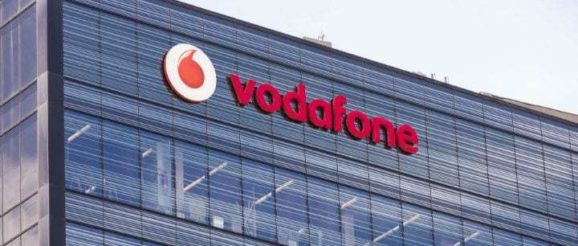Vodafone opens LTE band for private usage, as EU races US on spectrum innovation

Vodafone is the first network operator in the UK to sub-license unused LTE / 4G spectrum under UK regulator Ofcom’s new spectrum policy, which seeks to bolster rural and indoor coverage, and drive industrial transformation.
The deal signals a race for spectrum innovation, according to commentators, between the US, bowling ahead with shared and neutral host networking arrangements in the CBRS band, and Europe, where Germany is pioneering spectrum industrial usage and the UK has obliged operators to release unused local spectrum.
Vodafone’s new deal with UK-based mobile provider StrattoOpencell, owned by investment firm Digital Colony, only covers usage of its vacant 2600 MHz frequency spectrum on a holiday site in Devon, in the southwest of England. But it suggested the deal will expand for “consumers and businesses”, and said secondary licensing of its 2600 MHz spectrum will be also extended to “busy areas such as stadiums and city centres”.
The significance of the deal, despite its parochial campsite remit, even prompted comment from Vodafone UK chief executive Nick Jeffrey in the company’s press statement. “We are delighted to become the first mobile company in the UK to share some of our spectrum to extend rural coverage,” he said, even pairing it with such company milestones such as the first text message and the first 5G holographic call.
In a blog post, Dean Bubley, founder at Disruptive Analysis, said: “There definitely seems to be a bit of race between the new US CBRS deployments, and the UK’s new local spectrum models, to see which gets the most innovative new concepts and mobile networks to market. The German industrial 5G band and a few others are worth watching too.”
In July, in a major shift in spectrum policy, Ofcom moved to open up UK airwaves for enterprises to deploy private and shared networks, following parallel initiatives in other markets, notably the US and Germany, geared towards rural coverage and industrial transformation.
There are three main parts to Ofcom’s spectrum strategy: to dedicate the 3.8-4.2 GHz band for local deployments; to require national operators to relinquish unused licensed spectrum to enterprises; and to also make available the lower 26 GHz band for private and shared access.
Under the first of these, Ofcom is granting local shared-access licenses in the 1800 MHz and 2300 MHz shared bands, sections of which are licensed to mobile operators running public networks. It is also making available the 3.8-4.2 GHz band exclusively for local private and shared networks; the 3.8-4.2 GHz band will not sold for national mobile broadband services.
The Vodafone agreement falls into the second category, where Ofcom has obliged national operators to grant access to their licensed spectrum in locales where they have failed to stand-up coverage. This covers vacant local spectrum in the 800 MHz, 900 MHz, 1400 MHz, 1800 MHz, 1900 MHz, 2100 MHz, 2300 MHz, 2600 MHz and 3.4 GHz bands.
Bubley commented: “The secondary licensing model is pretty unique, as it allows people to request to use telcos’ spectrum resources which are lying fallow. It’s a bit like the spectrum-leasing model seen in some countries’ remote areas for mining or community wireless.”
Meanwhile, the lower 26 GHz band, harmonised across Europe as the pioneer millimetre band for public 5G, is also being opened up for shared access. This is geared towards indoor-only deployments, where StrattoOpencell has traditionally focused.
StrattoOpencell’s campsite deployment in Devon, using Vodafone’s local 2600 MHz spectrum, will see it install 4G outdoor small cells, linking to Wi-Fi gateways in caravans, affording fixed-wireless LTE speeds of up to 120Mbps. The setup is designed to overcome interference between the site’s existing Wi-Fi network and private mobile hotspots. Costs will be bundled into rental fees, along with costs for other utilities.
All parties positioned the deal as one for rural coverage, but the model holds also for neutral host and private networking in enterprise and industrial sites.
Jeffrey said: “Mobile connectivity in rural areas is just as important as it is for those in towns and cities, which is why we continue to work with others to help improve rural connectivity for all.”
Graham Payne, chief executive of The Digital Colony UK Infrastructure Platform, added: “There remains a digital divide [between] those in the UK’s urban centres and rural areas. We are bring(ing) a fresh approach to close this gap. We are pioneering new solutions and services as part of our neutral host approach to UK digital infrastructure.”
Philip Marnick, group director of spectrum at Ofcom, commented: “Our new sharing approach aims to help more people access the airwaves they need to create local networks around the UK, including improving connections in rural areas… We look forward to seeing how others use our new spectrum access approach to support innovation and enable local communities to have better connections.”
Bubley reflected: “For now, this is a private LTE service for local fixed-wireless access. But it could be extended to SIMs for onsite mobile devices, or support Vodafone’s smartphone subscribers onsite. It could also handle WiFi calling / SMS for other operators’ users.
“I’m not sure if the agreements with Vodafone and Ofcom to reuse spectrum locally would allow full neutral-host, broadcasting the IDs of the other UK MNOs, though. Maybe as the various network-sharing and national-roaming options under consideration by the UK Government evolve, that could be a possibility.”
The post Vodafone opens LTE band for private usage, as EU races US on spectrum innovation appeared first on Enterprise IoT Insights.
